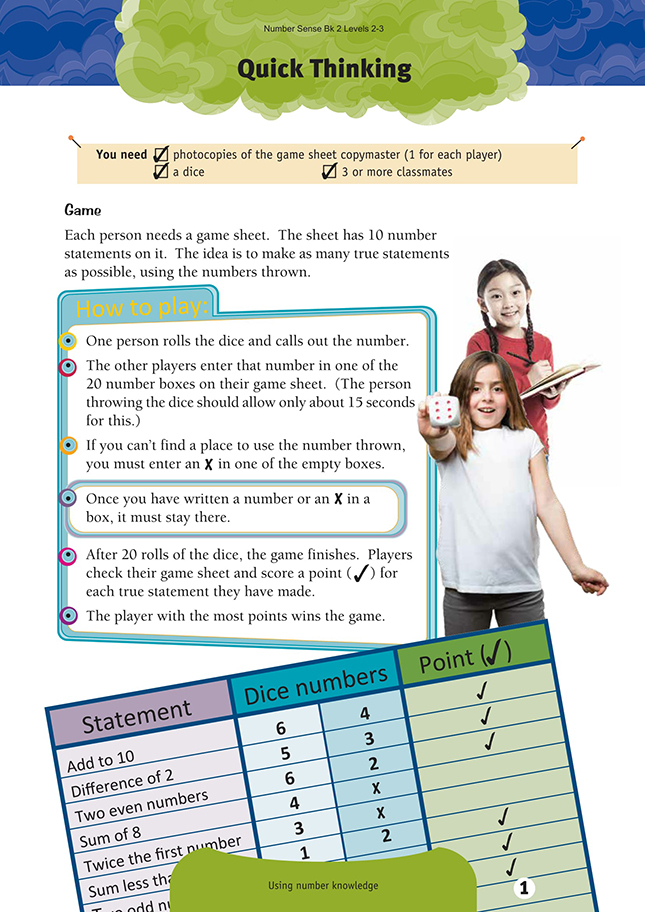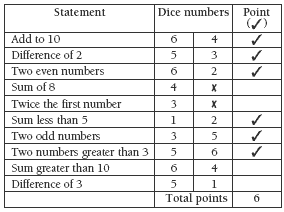This is a level 2 number activity from the Figure It Out series. It relates to Stage 5 of the Number Framework.
Click on the image to enlarge it. Click again to close. Download PDF (268 KB)
use basic facts knowledge of addition and subtraction facts
Number Framework Links
Use this game to give your students practice in recalling basic facts. It will be suitable for students using advanced counting strategies (stage 4) and early additive strategies (stage 5).
FIO, Levels 2-3, Number Sense and Algebraic Thinking, Book Two, Quick Thinking, page 1
Copymaster of gameboard (1 for each player)
A dice
3 or more classmates
Game
In this game, the students need to make strategic decisions about the best line on which to put given pairs of dice numbers. The game gives them practice in recognising and recalling important mathematical terms and some addition and subtraction basic facts.
Carefully review the How to Play section with the students. They need to realise that each throw of the dice must be checked against any of the 10 statements. To do this quickly in the 15 second time limit, they will need to be familiar with the meanings of the terms in each statement. Check that they know the meaning of “sum”, “difference”, and “twice”. You many need to pay special attention to the combination of terms in “sum less than” and “sum greater than”. Reading the statement lines is likely to be an issue for some students.
Playing the game strategically involves thinking about which statements are hardest to satisfy. For example, getting two even numbers is much more likely than getting one number that is twice that of the other. The students should try to fill the “hard to get” statements as early as possible.
Extension
Have the students make up 10 statements that they could use in a game that requires them to multiply the 2 dice numbers together. They can test them out by playing a few games with a classmate before presenting them to the class. This would be suitable for students at the advanced additive stage.
Answers to Activity
Game
A game using basic facts. A completed game board
might look like this:
(Wrong statements can result from entering a wrong number, which you cannot change, or having empty boxes towards the end that you have to fill with an X.)

